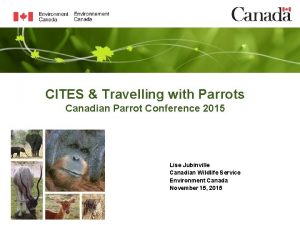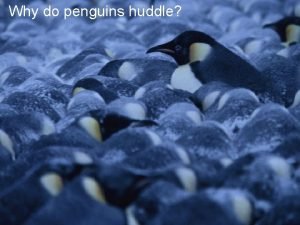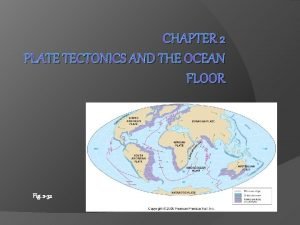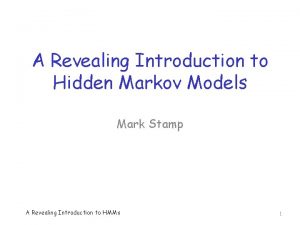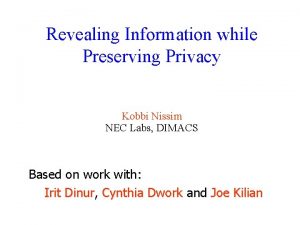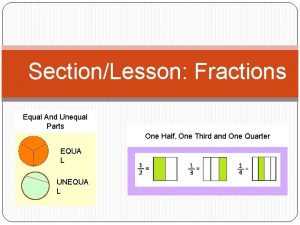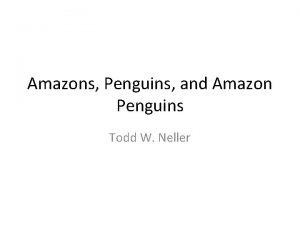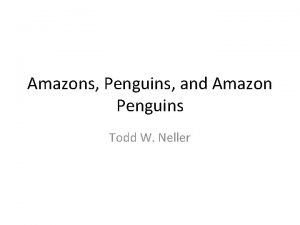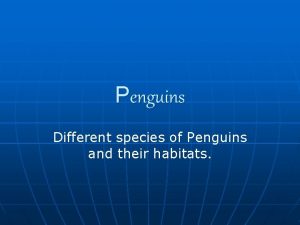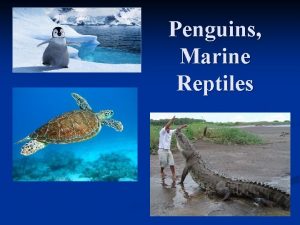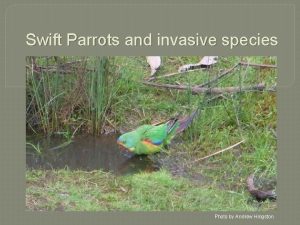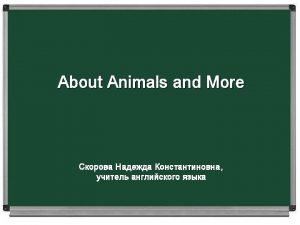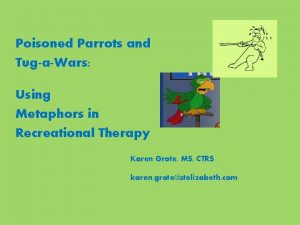Parrots Penguins and Parts Revealing Scientific Relationships 8

















- Slides: 17


Parrots, Penguins, and Parts Revealing Scientific Relationships 8 th Grade Science

Lesson Objectives Students will be able to: • Identify anatomical similarities and differences between organisms. • Explain the relationships between organisms based on homologous structures.

I Used to Think… Essential Question: How do scientists determine relationships between today’s organisms and their ancestors using their physical appearance and characteristics? Answer this question on the left side of your “I Used to Think… But Now I Know” handout.

How I Know It • • Choose “parrot” or “penguin. ” On the handout, use one color of marker to write down everything you know about that animal inside the circle. Outside the circle, write down how you knew that information. Draw a line to connect the information you know with how you know it.

Squawkzilla vs. Crossvallia Penguin • • • Find two other classmates who chose the same animal as you. Form a group and read the article that matches your animal. Divide up the reading similarly to the chart to the right. Once you are all done reading, take turns sharing information from your reading section with your group. • Parrot groups: Student 1: paragraphs 1 -5 ● Student 2: paragraphs 6 -10 ● Student 3: paragraphs 11 -15 ● • Penguin groups: Student 1: paragraphs 1 -3 ● Student 2: paragraphs 4 -6 ● Student 3: paragraphs 7 -9 ●

• • • Flap to the Future: Level 1 Watch the “Flap to the Future” game play video. Listen closely to the narration. In the “Level 1” box on your handout, sketch the animal and take notes.

• • Flap to the Future: Level 2 Listen closely to the narration. Sketch the animal in the box on your handout, and take notes. How has this animal changed?

• • Flap to the Future: Level 3 Listen closely to the narration. Sketch the animal in the box on your handout, and take notes. How has this animal changed?

• • Flap to the Future: Level 4 Listen closely to the narration. Sketch the animal in the box on your handout, and take notes. How has this animal changed?

Game Over • Were there any differences between the organisms? What were they? • Were there any similarities between the organisms? What were they? Turn to your Elbow Partner and share your answers. • Discuss: what did the game say about the relationship between the organisms?

Photo Deconstruction • • Describe what you see. What do you think this represents? Source: Petrovič, V. V. (2011). Homology vertebrates. Wikimedia Commons. Https: //commons. wikimedia. org/w/index. php? curid=37704829

Let’s Dig Deeper Bozeman Science Video (1: 35 - 2: 08) What evidence can you see that suggests these organisms are related? Source: Petrovič, V. V. (2011). Homology vertebrates. Wikimedia Commons. Https: //commons. wikimedia. org/w/index. php? curid=37704829

Who “Nose? ” • Do these organs all have the • • • same function? Similar appearance? Similar location? Similar structure? Homologous structure: An organ or body part that appears in different animals and is similar in structure and location—but it doesn't necessarily share the same purpose. Source: N. a. (n. d. ). Homologous structure. Your. Dictionary. Https: //www. yourdictionary. com/homologous-structure

Hand It to the Animals • Let’s explore the hands of 10 different zoo animals. • Bring up the “Hand It to the Animals” document. Link: https: //tinyurl. com/animalhands ● Click “Make a copy. ” • In each row, click on the number in the first column to view the x-ray. Then, answer the questions on the paper copy of the handout provided.

Claim, Evidence, Reasoning • Join your assigned groups. • On the CER handout, develop a claim about the following prompt: “What is the relationship between the animals? Base your claim on what you see in the xrays. ” • Provide evidence for your claim. • Explain your reasoning for how the evidence justifies your claim.

But Now I Know… • Revisit your “I Used to Think… But Now I Know” handout. • Compare your thoughts before the lesson versus after the lesson. Consider this question: “How do scientists determine relationships between today’s organisms and their ancestors using their physical appearance and characteristics? ” • Answer this question while filling in the “But Now I Know” column on the right side of the handout.
 Cites certificate for parrots
Cites certificate for parrots William baxter environmental ethics
William baxter environmental ethics Kidzone penguins
Kidzone penguins Description of a penguin
Description of a penguin Physical features of a penguin
Physical features of a penguin Penguins class
Penguins class Siccar point cambo
Siccar point cambo Specific heat units
Specific heat units Penguins elbow name
Penguins elbow name From now
From now A revealing introduction to hidden markov models
A revealing introduction to hidden markov models Tru face revealing gel
Tru face revealing gel Revealing information while preserving privacy
Revealing information while preserving privacy A revealing introduction to hidden markov models
A revealing introduction to hidden markov models Order revealing encryption
Order revealing encryption Scientific inquiry vs scientific method
Scientific inquiry vs scientific method How is a scientific law different from a scientific theory?
How is a scientific law different from a scientific theory? Fractions equal and unequal parts
Fractions equal and unequal parts
